Just for Fun: A Few New Liberal Arts
The value of a liberal arts education has always been that, done well, it's recession proof. It transforms the student from an expert on how things have been done in a particular discipline (which is not very much further advanced than basic high school social skills) to a person who can ask a good question, listen to the answer and pursue the subject instead of, say, dead fish floating downstream. A good liberal arts education teaches you how to think, not what to think.
Those "whats" fade from fashion fairly quickly. The "hows" fashion fashion.
Among the new liberal arts proposed by the authors, there are a few that may not surprise you. For example:
"Finding" itself is one. Googling alone doesn't get you the diploma, you know (ever try to google an article in this newsletter?). Online searching is something of a skill.
"Food" involves not just what to put on your plate but the study of agriculture, particularly our failure to "trust ourselves to grow food." In the garden, that is. Which has led to a diet of "prepackaged, preservative-soaked material." There's a lot to chew on here.
"Journalism" as "a community's conversations with itself." The new journalist asks not what news fits in a particular format but "how their work is advancing the discussion." We ask ourselves that all the time, really.
"Mapping" lets us map everything from "far-off military movements to locally-available produce." It may involve cameras with geotagging capability and digital maps with embedded information that result "in something that's more than a record of place; it's a record of time."
Well, just a few, we said. Enough to suggest that a new liberal art could be anything that does not lead to employment. A field that has boomed in the last year. Although there is one other component to a liberal art missing in that test.
It has to also be something that keeps you up at night.
The one new liberal art that makes this book fodder for our mill, however, is "Photography." The argument goes that the "new liberal arts are overwhelmingly arts of the DOCUMENT, and the photograph is the document par excellence."
"We have an habitual sense of how photographic meaning is created," Media Theorist Timothy Carmody writes, "taken from our experience watching movies or taking our own photographs. But we also have a critical sense of it, taken from our aesthetic responses to photographs and cinema, and our awareness of how both are edited, enhanced, and manipulated."
OK, sure.
Readers of this publication know what a photograph is. Even what a good one is. And especially what a bad one looks like. And, if they've been reading a while, even how to improve what a photograph looks like.
Meaning, though, is created by the viewer.
We were reminded of this the other day killing some time watching Tom Wujec's 6:26 lecture at TED titled "Three Ways the Brain Creates Meaning" (
http://www.ted.com/talks/tom_wujec_on_3 ... aning.html). All these images, all these talking heads, all these screaming meanies just confuse. But Wujec found that a few illustrations and images helped create meaning in the viewer.
The brain creates mental models through a series of ah-ha moments, he explained. It turns out that our eyes deliver their sensations to a part of the brain responsible for shapes. And that part of the brain routes the sensations to yet other sections of the brain for the more refined processing that creates the mental model. So shapes are key.
He goes on from there (working with shapes interactively to refine our understanding of a subject, if you must know) but we had to get back to work.
We were building a cataloging program for books. And as part of our testing, we grabbed an armful of our old college texts to enter their titles in the database. Aeschylus, Aristotle, Herodotus, Hesiod, Homer, Plato (in various translations), Xenophon. We'd grabbed the Greeks.
Talk about a liberal arts education.
But what made us really pause was that some of these books had been our father's college texts, too. That cultural link is not being maintained any more, let's just say. You can get through college today without turning one page of Aristotle, let alone Hesiod. Years ago I had a nephew who had read Augustine's Confessions, but no one's come close to that lately.
That's the beauty of a liberal arts education. It isn't "what" you know, so much as it is learning "how" to think. You don't need Homer or Augustine. You just need a good problem.
We started dreaming about the reading list we'd devise for the imaginary Uncle Mike's Summer School for Brilliant Nephews and Scintillating Nieces. Then we wondered if, in the new liberal art of Photography classes, the students will have ever heard of Man Ray or Imogene Cunningham or Ansel Adams. We closed our eyes and saw them interactively shuffling images on large touch-screen monitors that hovered mysteriously in the air before them.
Ah, the future is the best amusement park ever conceived.
When we opened our eyes, we realized the only thing that seems certain is that, if you've got a new idea, you should put it in a book like the authors of New Liberal Arts.
THIS EXCERPT IS FROM [url]http://www.imaging-resource.com/IRNEWS/[url]









